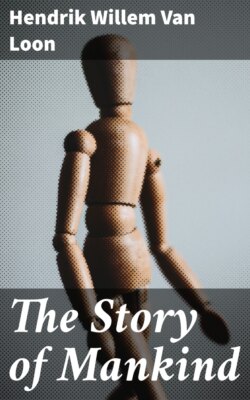Читать книгу The Story of Mankind - Hendrik Willem Van Loon - Страница 20
На сайте Литреса книга снята с продажи.
THE ÆGEAN SEA
ОглавлениеTable of Contents
THE PEOPLE OF THE ÆGEAN SEA CARRIED THE CIVILISATION OF OLD ASIA INTO THE WILDERNESS OF EUROPE
THE TROJAN HORSE
When Heinrich Schliemann was a little boy his father told him the story of Troy. He liked that story better than anything else he had ever heard and he made up his mind, that as soon as he was big enough to leave home, he would travel to Greece and “find Troy.” That he was the son of a poor country parson in a Mecklenburg village did not bother him. He knew that he would need money but he decided to gather a fortune first and do the digging afterwards. As a matter of fact, he managed to get a large fortune within a very short time, and as soon as he had enough money to equip an expedition, he went to the northwest corner of Asia Minor, where he supposed that Troy had been situated.
SCHLIEMANN DIGS FOR TROY
In that particular nook of old Asia Minor, stood a high mound covered with grainfields. According to tradition it had been the home of Priamus the king of Troy. Schliemann, whose enthusiasm was somewhat greater than his knowledge, wasted no time in preliminary explorations. At once he began to dig. And he dug with such zeal and such speed that his trench went straight through the heart of the city for which he was looking and carried him to the ruins of another buried town which was at least a thousand years older than the Troy of which Homer had written. Then something very interesting occurred. If Schliemann had found a few polished stone hammers and perhaps a few pieces of crude pottery, no one would have been surprised. Instead of discovering such objects, which people had generally associated with the prehistoric men who had lived in these regions before the coming of the Greeks, Schliemann found beautiful statuettes and very costly jewelry and ornamented vases of a pattern that was unknown to the Greeks. He ventured the suggestion that fully ten centuries before the great Trojan war, the coast of the Ægean had been inhabited by a mysterious race of men who in many ways had been the superiors of the wild Greek tribes who had invaded their country and had destroyed their civilisation or absorbed it until it had lost all trace of originality. And this proved to be the case. In the late seventies of the last century, Schliemann visited the ruins of Mycenæ, ruins which were so old that Roman guide-books marvelled at their antiquity. There again, beneath the flat slabs of stone of a small round enclosure, Schliemann stumbled upon a wonderful treasure-trove, which had been left behind by those mysterious people who had covered the Greek coast with their cities and who had built walls, so big and so heavy and so strong, that the Greeks called them the work of the Titans, those god-like giants who in very olden days had used to play ball with mountain peaks.
MYCENÆ IN ARGOLIS
A very careful study of these many relics has done away with some of the romantic features of the story. The makers of these early works of art and the builders of these strong fortresses were no sorcerers, but simple sailors and traders. They had lived in Crete, and on the many small islands of the Ægean Sea. They had been hardy mariners and they had turned the Ægean into a center of commerce for the exchange of goods between the highly civilised east and the slowly developing wilderness of the European mainland.
THE ÆGEAN SEA
For more than a thousand years they had maintained an island empire which had developed a very high form of art. Indeed their most important city, Cnossus, on the northern coast of Crete, had been entirely modern in its insistence upon hygiene and comfort. The palace had been properly drained and the houses had been provided with stoves and the Cnossians had been the first people to make a daily use of the hitherto unknown bathtub. The palace of their King had been famous for its winding staircases and its large banqueting hall. The cellars underneath this palace, where the wine and the grain and the olive-oil were stored, had been so vast and had so greatly impressed the first Greek visitors, that they had given rise to the story of the “labyrinth,” the name which we give to a structure with so many complicated passages that it is almost impossible to find our way out, once the front door has closed upon our frightened selves.
THE ISLAND-BRIDGES BETWEEN ASIA AND EUROPE
But what finally became of this great Ægean Empire and what caused its sudden downfall, that I can not tell.
The Cretans were familiar with the art of writing, but no one has yet been able to decipher their inscriptions. Their history therefore is unknown to us. We have to reconstruct the record of their adventures from the ruins which the Ægeans have left behind. These ruins make it clear that the Ægean world was suddenly conquered by a less civilised race which had recently come from the plains of northern Europe. Unless we are very much mistaken, the savages who were responsible for the destruction of the Cretan and the Ægean civilisation were none other than certain tribes of wandering shepherds who had just taken possession of the rocky peninsula between the Adriatic and the Ægean seas and who are known to us as Greeks.
